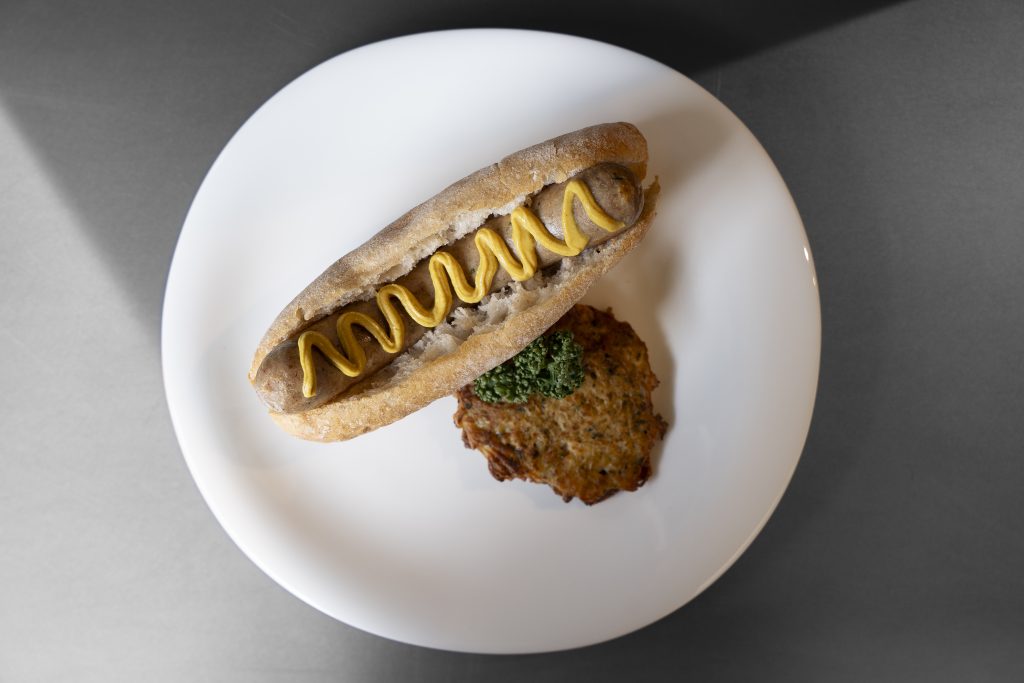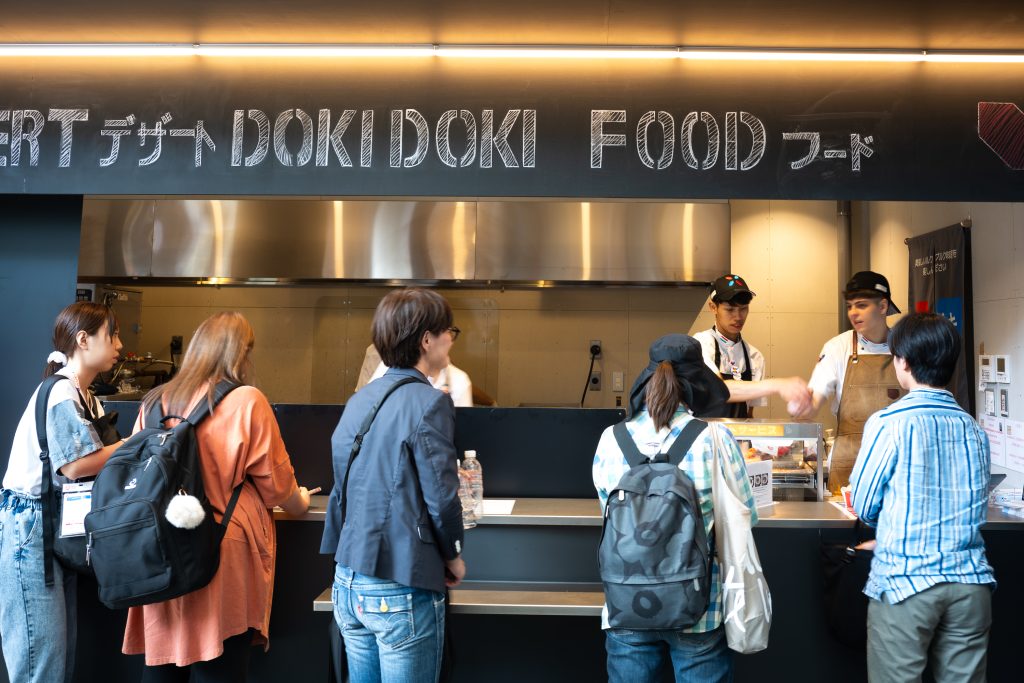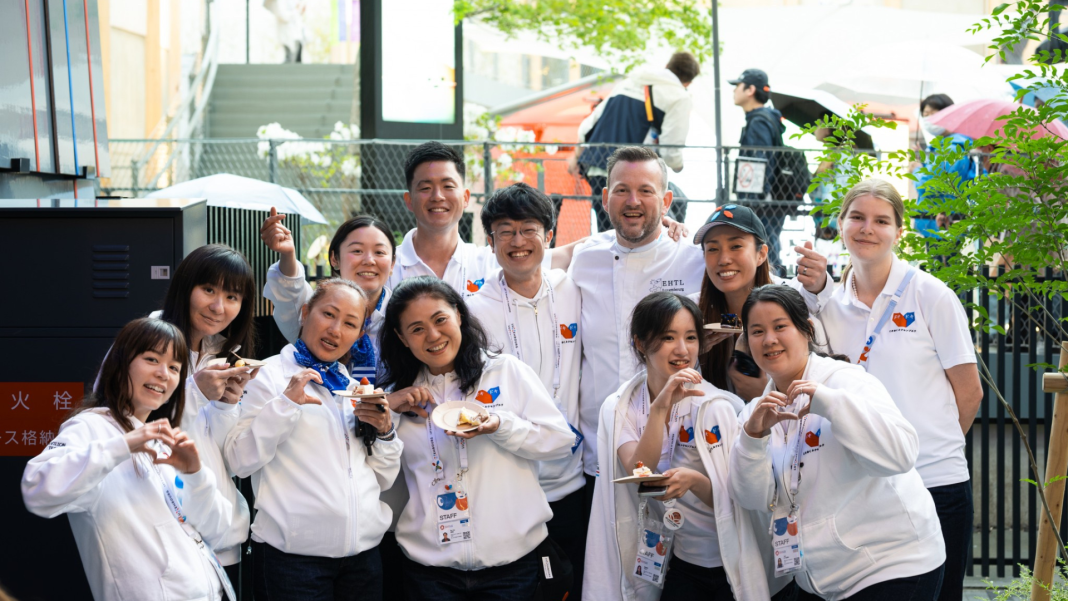While some stands at Osaka’s Expo 2025 experiment with foodtech, Luxembourg has kept its offering simple. Specialities such as Gromperekichelcher and macaroons serve as entry points for telling a bigger story about the Grand Duchy. Alain Hostert, head of food and drinks operations and Ecole d’Hôtellerie et de Tourisme du Luxembourg (EHTL) coordinator, explains.
When preparing the menu for the Luxembourg pavilion at Expo 2025 Osaka, Alain Hostert says: “We tried to create some dishes but one of the most important things that always came back is that Japanese people love the clichés of each country and they want to taste the authentic food of each country.”
So visitors, who first pass through the storytelling experience, reach the food court and have a wide range of food and drink options. Of course, there’s “Gromperekichelcher” (potato fritters), served with mustard, salmon and apple “compôte”—which some of the team is now referring to as “ringo” (the Japanese word for apple). There’s a “Luxemburger”, plus grilled sausages, which are produced fresh each day, prepared by a German butcher from another stand. There’s also the traditional “Féierstengszalot” served in brioche, topped with egg, chives, wasabi mayonnaise and pickles.

Next to the salty items are sweets, like macaroons with the colours of the Luxembourg flag and a “Dojima” roll made of a fluffy biscuit with white cream, the red fruit jelly within in the form of Luxembourg’s red lion. Hostert says the team works with a Japanese pastry shop and gets deliveries once a week—the pastry chef there speaks some French, having previously worked at Oberweis in Luxembourg. Most of the food used at the stand is sourced locally in Japan. Across from the food area are the drinks, where visitors can sample Luxembourg wine and beer.
It’s all about the storytelling
“Japanese culture is all about traditions,” Hostert says. “What they want to learn is the tradition of each country, the storytelling behind it.” The cooking team likes to talk about traditions—like how “Gromperekichelcher” are a staple at the Schueberfouer and Christmas markets. Visitors even sometimes ask to take photos with the team.
The storytelling isn’t just about the food, however. The EHTL students are sometimes asked about their own cultures. The team, like Luxembourg itself, is multicultural, and visitors are sometimes quite surprised about the range of nationalities representing the Grand Duchy.
Hostert has noticed that Japanese tend to visit in small groups or families, often stand-hopping to try different dishes. “For the Japanese, it’s like travelling the world,” he says. At the Luxembourg stand, he adds, they like to “buy one item of each food, cut it into four or six pieces,” so everyone can try. “The most fun was seeing a family of four that ordered one macaroon. Then the mother took scissors out of her handbag and cut them,” he recalls. Hostert saw this and brought some more over for them.
Another observation Hostert has made is that “the Japanese love it when you tell them it’s unique, a limited edition. They jump on it… We’re a small country, and everything you find in Luxembourg is kind of limited.” So, while “Grillwurscht” is served on normal days, special cheese sausages might be exclusively offered on other days. Other limited edition dishes have included Kniddelen and the iconic, multilayered “Bamkuch”.

© GIE Luxembourg Expo 2025 Osaka / Chris Schuff)
Meanwhile, Hostert is in a Whatsapp group with chefs from other stands, who share their experiences and even offer a helping hand. It was difficult at one point for Hostert to find big tables in Japan for a special event, but the Canada stand came to the rescue, lending them tables and tablecloths.
Japan is “a dream”
Hostert says that for the students, “Japan is [something] they’ve been dreaming of their whole lives. Japanese cuisine goes back to the sources, it’s product-driven, it’s important where the product is selected, how it’s produced.”
Of course, they’ve enjoyed sampling local foods outside the stand as well. Hostert’s personal favourite Japanese dish is “Shabu-shabu”, a hot pot with meat, vegetables, and a selection of sauces. And in the historic Kujo district, Hostert was impressed to find a ramen with a broth that had been cooking for 100 hours.
Read more articles:
The Rise Of Japanese Culinary Culture In Luxembourg
Leading Culture: How Ana Maria Tzekov Is Transforming Luxembourg’s CAPE
Smart Stays In The Grand Duchy: Flexible Housing Solutions In Luxembourg

